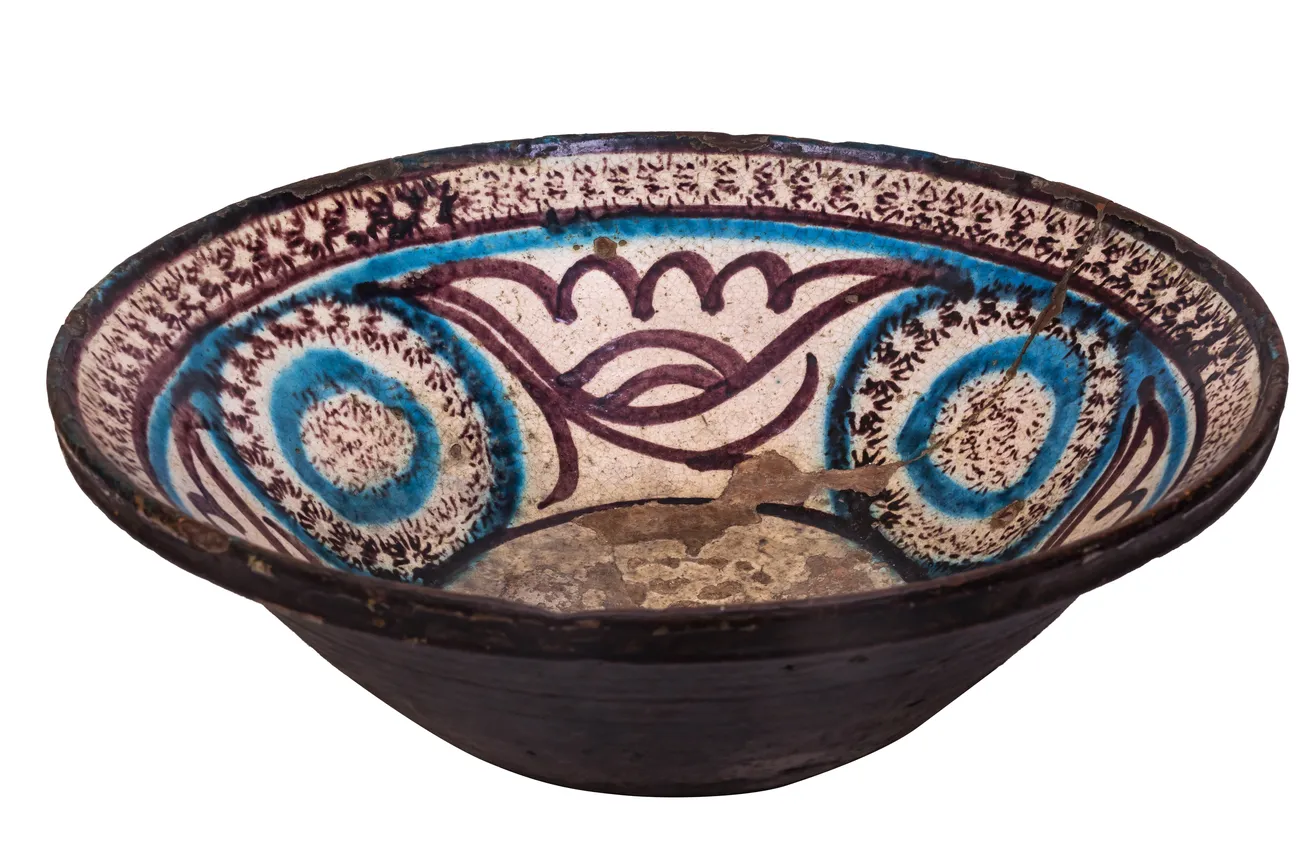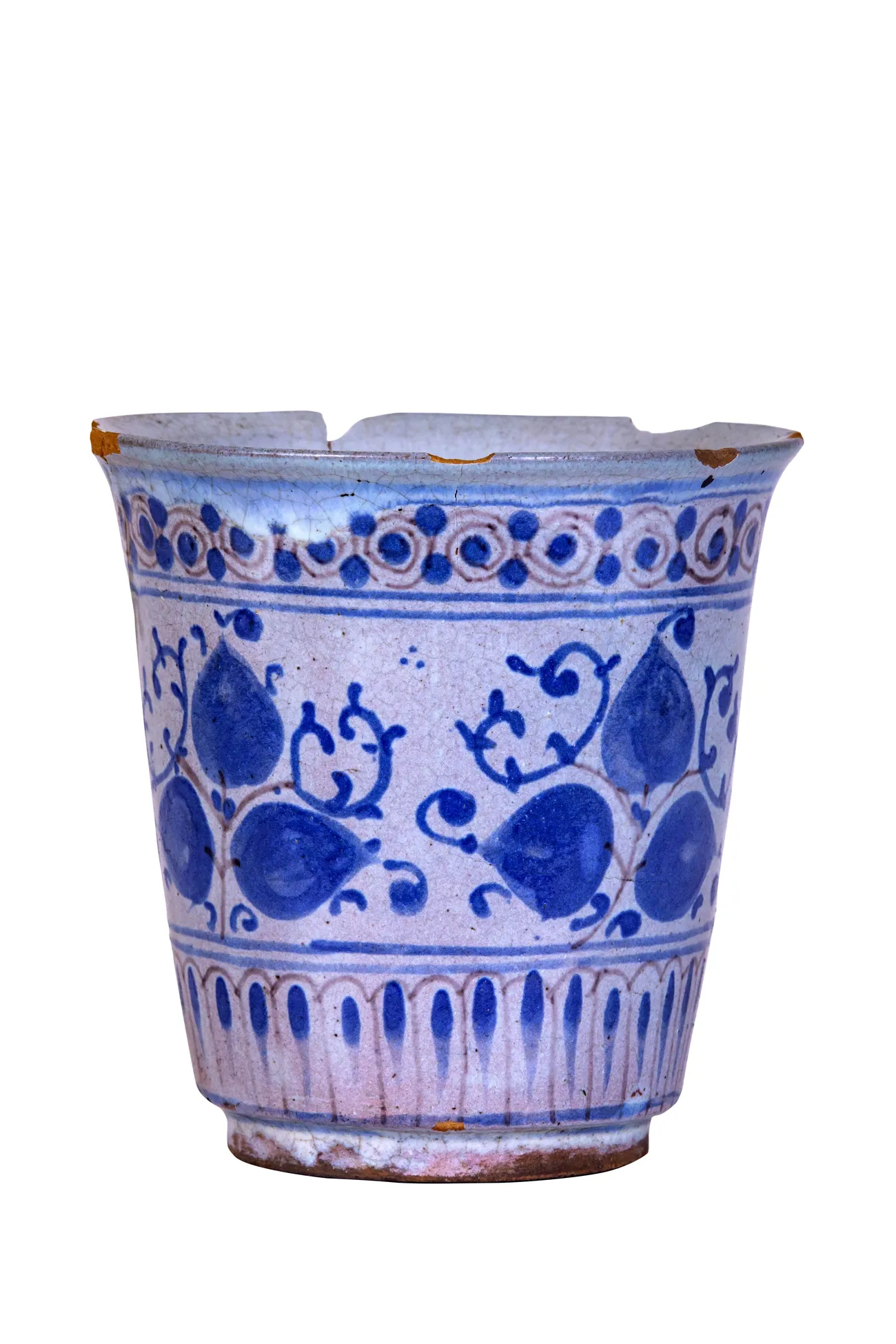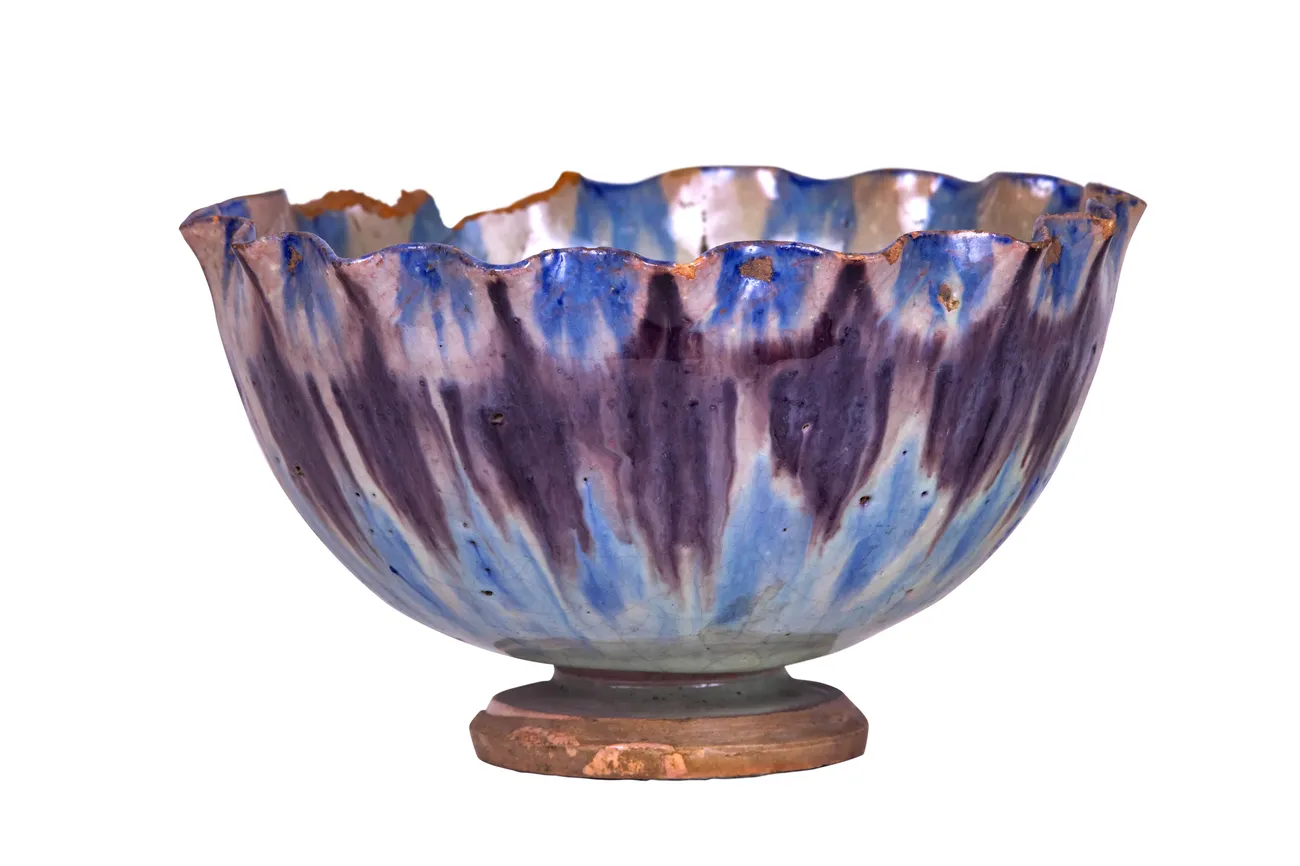Most of them are the products of the craftsmen of the Fergana Valley.
Pottery traditions have existed in the region for many centuries. The centuries-old traditions have led to the emergence of specialization in this type of craft. Some potters worked in collaboration with architects, making facing tiles, while others produced household pottery or tableware.
The specialties include:
– koshinpazlik – production of tiles for the decoration of buildings;
– parchinsozlik – production of glazed bricks without ornamentation;
– empazlik – making large jugs;
– lapaқgarlik – making jugs with two eyes;
– zhomchilik – production of cans for washing and other household needs;
– tandirchilik – production of tandoors;
– kosataroshlik – making tableware of open forms;
– kuzagarlik – making jugs;
– tabakbandlik – production of dishes;
– chinnisozlik – making expensive tableware in the style of Chinese porcelain.
As for pottery, in the 19th century in the Fergana Valley, there were several centers of its production such as Rishtan, Gurumsaray, Andijan, Kokand, Chust and others. The most famous centers, without a doubt, were and remain Rishtan, Gurumsaray and Andijan. Almost all of the above-mentioned specialties of pottery existed there. The shape and ornamentation of products, in particular, tableware have changed over time in line with fashion trends.
The main part of the pottery collection of the Kokand Museum-Reserve is made up of Rishtan products. It is known that Rishtan ceramics differs from the products of other centers in a variety of shapes, grace of flying brush painting, traditional white and blue color palette.
The collection of the museum includes works by People‘s Artist of Uzbekistan Ibragim Komilov, Ganijon Shokirov, Khotamboi Rustamov, Isamiddin Yusupov, Musa Ismailov, Khakimjon Sattarov, Ashurali Yuldashev, Abdukadir Khaidarov, Zamzam Babayev, and Rustam Usmanov. These are glazed and unglazed, painted products made on a potter‘s wheel: bowls, kosa and shokosa (bowls), kallik (vessels with a base much smaller than the diameter, a type of palace utensils), charhi (large dishes), jugs, dastshui (washstands), khurma (vessels with a lid), urdaks or murgobi (water vessels), vases, hums, lapaks (a kind of hums), figurines whistles (images of mythical creatures) and much more. The collection also includes modern products from the Rishtan ceramics plant – teapots, cream bowls, candy bowls, trays, and more. A significant part of these works adorn the exposition of the Museum of Applied Arts which is part of the Kokand Museum-Reserve.
You can learn more about the topic in the book-album “The Collection of the Kokand State Museum-Reserve” (Volume XLIII) in the series “The Cultural Legacy of Uzbekistan in the World Collections”.
The main sponsor of the project is the oilfield services company Eriell-Group.




